"dissolute living before her marriage with Francis Dereham, and that was not secret, but many knew it."
|
In the October of 1541, Thomas Cranmer, the Archbishop of Canterbury, was told by John Lascelles, a member of Thomas Cromwell's household, that he had knowledge that Catherine Howard, the fifth wife of Henry VIII had had intermate relations with three men while living at Chesworth House, a place where she had spent her childhood. Cranmer disliked Thomas Howard, Catherine's grandfather, and used this information to discredit the Howard family by informing Henry of Catherine's teenage activities. He left the king a note as he celebrated All Souls Day in the Chapel Royal at Hampton Court. In this note, Cranmer wrote that Catherine Howard had been accused of "dissolute living before her marriage with Francis Dereham, and that was not secret, but many knew it." Events soon escalated with the arrest and torture of the so-called lovers of the queen. This was followed by the execution of Dereham, along with Thomas Culpepper, on the 10th of December and Catherine went to her death on the 13th of February the following year. The third man accused was Henry Manox, he was fortunate to escape death. What of the troublemaking John Lascelles, the instigator of this affair? He would be burnt at the stake for the crime of heresy on the 12th of July 1546. Cranmer would suffer the same fate in 1556.
0 Comments
There seems to be a bit of a disagreement among historians as to the reasons King John married his second wife Isabella of Angouleme, some say it was born out of lust, others out of the need to control the areas that neighboured Angouleme. John, it has been said, took an immediate fancy to Isabella, the daughter of Audemar the Count of Angouleme, and was quick to make a play for her. John certainly loved women, he was unfaithful to both his wives and kept numerous mistresses, some of them married women, so it is easy to believe that he was determined to have her and was not going to take no for an answer.
There was a big difference in their ages, John was nearly thirty-four and Isabella was about fifteen when they married on the 24th of August 1200. The birth of their firstborn suggests that the king may have respected her tender age and stayed out of the marriage bed until at least the end of 1206. Following their marriage, the couple arrived back in England, where on this day, the 8th October 1200, Isabella was crowned at Westminster Abbey. The view that most historians put forward, that King John was a tyrant and a thoroughly bad chap with absolutely no redeeming features, makes it difficult to find anything positive to say about his twelve-year marriage to Isabella, but from what I have read it looks to be an exact copy of that of John's parents Henry II and Eleanor of Aquitaine. John was a philanderer, so was Henry, Isabella a been a strong and forceful woman, so was Eleanor. Soon after John's death in 1216, Isabella left her children, the youngest just a year old, in the care of the English court, and made a new life for herself with a new husband in her home of Angouleme. On the 2nd October 1501, Catherine of Aragon arrived at the Devon port of PlymouthCatherine was greeted by the nobility who escorted them to St Andrews Church where thanks were given for her safe arrival and outside the townspeople clamoured to welcome their distinguished foreign guests. Catherine was later escorted to Exeter where she was to stay for fourteen days. On the 16th her future father-in-law, Henry VII, sent messengers with a letter of welcome and a delegation of courtiers to escort her to London. Catherine was to be married to Prince Arthur, the heir to the throne of England and of course we know that this marriage was short lived. Catherine would become queen of England on her marriage to Henry, Arthur's brother and for the first eleven years of her marriage she would be happy, but in what would later be known as the Kings Great Matter her life would be turned upside down.
Catherine was renowned for her strength of character and virtue, and I wonder if she could have seen her future would have had reconsidered this English marriage as she left the Alhambra in Granada for the port of Corunna to board a boat to England. On this day in 1236 the marriage of Eleanor of Provence to Henry III. Eleanor was twelve when she arrived in England to marry the twenty-eight-year-old Henry, who she had never met.
A beauty by all accounts Eleanor was dressed in a shimmering golden outfit that 'fitted tightly at the waist and flared out to wide pleats at her feet. The sleeves were long and lined with ermine.' There was talk that Eleanor could not give Henry an heir, but their first child, the future Edward I, was born three years later, and other children followed in quick succession. Henry was very fond and loving towards his five children and detested spending long periods of time apart from them. Eleanor outlived Henry by nineteen years. Henry and Eleanor were the last of my monarch ancestors, it was a long long descent via their son Edmund, Earl of Lancaster, through princesses, nobility, gentry and farmers before my arrival in the world. On the 25th May 1553 the marriage of Jane Grey, the daughter of Henry Grey, Duke of Suffolk and Francis Brandon and Guildford Dudley, the son of John Dudley, Duke of Northumberland and Jane Guildford at Durham Place, Northumberland's house in London. During the first few months of 1553, Edward VI, under the influence of the Duke of Northumberland, had made an amendment to his Devise for the Succession in which he disinherited his half-sisters Mary and Elizabeth and named Jane his heir. By the May of that year and as part of his master plan Northumberland arranged the marriage of his son Guildford to Jane. Two months later, the boy king was dead and Jane was proclaimed queen and in a surprising act of defiance refused to allow Guildford to be named king, therefore scuppering Northumberland's plans to control both Jane, Guildford and England. Soon after events took a downturn with surprising speed. By July Jane was deposed, by November she had been tried and found guilty and by the beginning of February, she was awaiting the day of her execution. You can see the couple played here by Helena Bonham Carter and Cary Elwes in the 1986 film Lady Jane (which I quite liked but many didn't)
On the 5th December in 902 occurred the death of Ealhswith, the wife of Alfred the Great. In the year 869 Alfred was in Gainsborough, he was accompanied there by Burgred who was King of Mercia from 852 until 874. Burgred was the last true independent king of Mercia, whose reign was disrupted by frequent Viking invasions which began almost immediately after he ascended the throne. This Lincolnshire town was the home of Ealhswith, the daughter of Aethelred of the Earldom of Gaini, from were Gainsborough takes its name. Bishop Asser in his biography of Alfred wrote: "was betrothed to and married a wife from Mercia, of noble family, namely the daughter of Æthelred, of the ealdorman of the Gaini. The woman's mother was called Eadburh, from the royal stock of the king of the Mercians. I often saw her myself with my very own eyes for several years before her death. She was a notable woman, who remained for many years after the death of her husband a chaste widow, until her death." Ealhswith married Alfred in Gainsborough and afterwards they feasted at the Gainsborough Castle, home to the Earls of Gaini. Today, the town's castle is long gone but standing on the site is the towns famous Old Hall. Gainsborough remembers Ealhswith with Elswitha Hall a fine town house of red brick which stands next to Gainsborough's Guildhall, overlooking the River Trent. Alfred, it seems, despite famously standing up to the marauding vikings, was a superstitious man, it has been said that he did not wish Ealhswith to be given the title of queen, this was due to the antics of a former queen of Wessex who had the same name who had accidentally poisoned her husband. Ealhswith supported Alfred as king for over thirty years and no doubt during this time Alfred considered his wariness justified. Little is known of Ealhswith life but we do know that she was the mother of five children two of which became great leaders. Aethelflaed her daughter was the ruler of Mercia from 911 until her death, and Edward the Elder was king of England from 899 until 924. On Alfred's death Ealhswith was bequeathed three estates, one was Edington in Wiltshire, which you can see in the images below, where in 879 Alfred fought against an uncoordinated band of Vikings under its leader Guthrum who Alfred later persuaded to convert to Christianity. Ealhswith was commemorated in two 10th century manuscripts where it is written that she was
"the true and dear lady of the English" She was buried in the Benedictine abbey in Winchester that was begun by Alfred but finished by her son Edward the Elder. On this day in 1328, King Edward III of England married Philippa of Hainault at York Minster, just eleven months after Edward had become king of England. Edward's father, King Edward II had sent the Bishop of Exeter to Hainaut to check out the four daughters of William, Count of Hainaut. In a letter to the king the Bishop writes of his impression of the fourteen-year-old Philippa. In the letter, he describes her as a child but it has been argued that the description is of Philippa's older sister Margaret. A description of Philippa can be found the register of the Bishop of Exeter which reads:
"The lady whom we saw has not uncomely hair, betwixt blue-black and brown. Her head is clean-shaped; her forehead high and broad, and standing somewhat forward. Her face narrows between the eyes, and the lower part of her face is still more narrow and slender than her forehead. Her eyes are blackish-brown and deep. Her nose is fairly smooth and even, save that it is somewhat broad at the tip and also flattened, and yet it is no snub-nose. Her nostrils are also broad, her mouth fairly wide. Her lips somewhat full, and especially the lower lip. Her teeth which have fallen and grown again are white enough, but the rest are not so white. The lower teeth project a little beyond the upper, yet this is but little seen. Her ears and chin are comely enough. Her neck, shoulders, and all her body are well set and unmaimed; and nought is amiss so far as a man may see. Moreover, she is brown of skin all over, and much like her father; and in all things, she is pleasant enough, as it seems to us. And the damsel will be of the age of nine years on St. John's day next to come, as her mother saith. She is neither too tall nor too short for such an age; she is of fair carriage, and well taught in all that becometh her rank, and highly esteemed and well-beloved of her father and mother and of all her meinie, in so far as we could inquire and learn the truth." Phillipa and Edward were married for forty years, she gave Edward thirteen children, three of them died as a result of the Black Death in 1348. On this day in 1382, the marriage of Richard II to Anne of Bohemia, Richard was eight months younger than Anne, they were both fifteen years of age. Anne was the daughter of the Holy Roman Emperor Charles IV and Elizabeth of Pomerania and was described at the time of her marriage by a Westminster chronicler as a ' tiny scrap of humanity'
Criticism of the match began when the king was forced to pay Wenceslas of Bohemia, Anne's brother, £4,000,000 (in today's money) for the right to marry his sister. Adding insult to injury Anne brought no dowry and her large entourage was paid for, in part, by the king. Anne was crowned queen of England two days later. Their twelve-year marriage was considered to have been a happy one but despite that there were no children and therefore no heir. Following Anne's death of the plague at the Sheen in 1394 Richard had the building demolished. In 1396 Richard would marry the seven-year-old Isabella of Valois. Anne Boleyn may have died on the scaffold, blamed by Henry VIII for failing to produce the male heir he wanted and what, everyone thought, the country needed. How wrong they all were. Anne did succeed, she gave birth to one of our country greatest monarchs, Elizabeth I, born this day in 1533. Elizabeth arrived at 3 o’clock in the afternoon, but the birth of a daughter was not what the Tudor dynasty needed or what it was expecting, and this can be seen clearly in the announcement of Elizabeth's birth. The letter had already been written (as seen in the one that survives addressed to Lord Cobham) and on Elizabeth's birth, the word prince had had the letter S added. "Right trustie and welbiloved, we grete you well. And where as it hath pleased the goodnes of Almightie God, of his infynite marcie and grace, to sende unto us, at this tyme, good spede, in the delyveraunce and bringing furthe of a Princes, to the great joye, rejoyce, and inward comforte of my Lorde, us, and all his good and loving subjectes of this his realme....." Not the male heir Henry desired but Elizabeth turned out to be spirited, feisty and intelligent and showed all the signs of the great queen she would later be. As Elizabeth grew into a young woman she came to understand the power struggle behind the throne, and by the time old age had crept up on her, she knew all too well the personal cost of kingship.
It was in January of 1522 that Anne Boleyn left the French court of Claude Queen of France and returned to England on the order of her father Thomas Boleyn. She sailed from Calais and took up her place in the court of Henry VIII as lady in waiting to Catherine of Aragon. She had followed her sister Mary who had returned to England three years earlier to take up her post as maid-of-honour to Henry's queen. Initially, Thomas Boleyn had planned to marry Anne to her cousin, James Butler, but this did not come to fruition. On her arrival in court Anne soon discovered that Mary had become Henry VIII's mistress, however, she soon realised how easily Henry disregarded his mistresses, this would stand her in good stead when Henry began to pay attention to her. There is a difference of opinion on the subject of the early relationship between Anne and Henry some historians claim that Anne was a schemer who set her heart on being queen, others that they were genuinely in love. Whatever the reason, what I fail to understand is if he loved her so much, how could he believe the vile rumours that were going about in court and then literally leave her to her fate. Unfortunately, the true story has been lost to myth and to romantic legend but the real truth about this episode in history is that the people if England were subjected to a reign of terror for centuries. You can purchase the above print of Anne at my Etsy shop at
www.etsy.com/uk/listing/614496839/anne-boleyn-illustrated-print-without?ref=shop_home_active_9 |
Archives
February 2024
Categories
All
After ten years in the workplace I became a mother to three very beautiful daughters, I was fortunate enough to have been able to stay at home and spend my time with them as they grew into the young women they are now. I am still in the position of being able to be at home and pursue all the interests I have previously mentioned. We live in a beautiful Victorian spa town with wooded walks for the dog, lovely shops and a host of lovely people, what more could I ask for.
All works © Andrea Povey 2014. Please do not reproduce without the expressed written consent of Andrea Povey. |


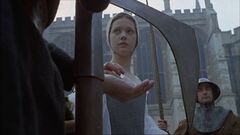






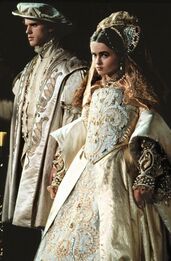







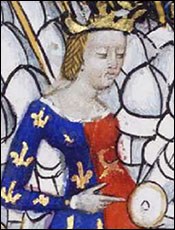
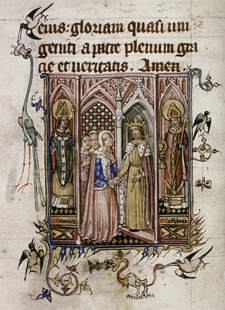



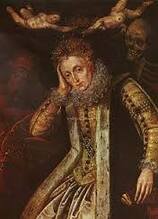
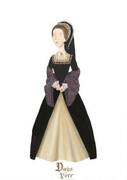

 RSS Feed
RSS Feed
